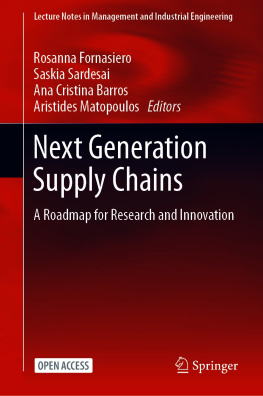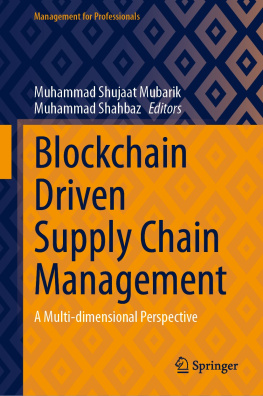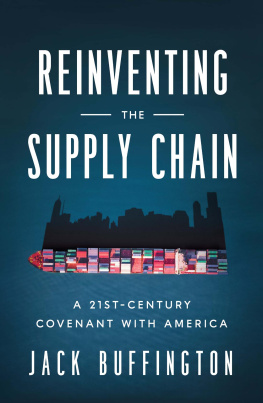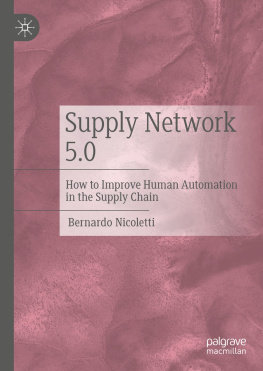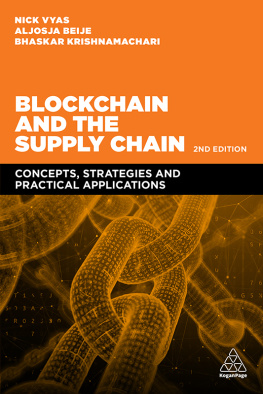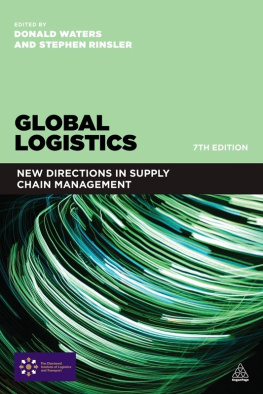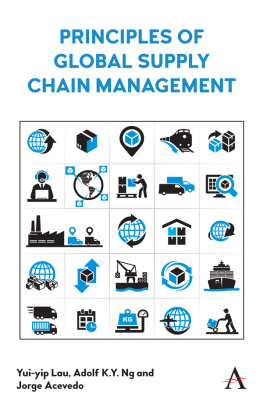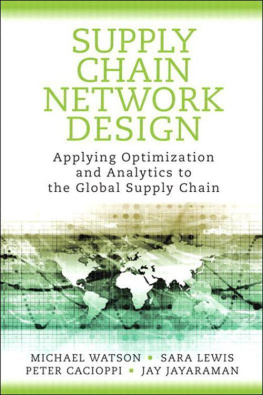Lecture Notes in Management and Industrial Engineering
Series Editor
Adolfo Lpez-Paredes
INSISOC, University of Valladolid, Valladolid, Spain
This book series provides a means for the dissemination of current theoretical and applied research in the areas of Industrial Engineering and Engineering Management. The latest methodological and computational advances that can be widely applied by both researchers and practitioners to solve new and classical problems in industries and organizations contribute to a growing source of publications written for and by our readership.
The aim of this book series is to facilitate the dissemination of current research in the following topics:
Strategy and Entrepreneurship
Operations Research, Modelling and Simulation
Logistics, Production and Information Systems
Quality Management
Product Management
Sustainability and Ecoefficiency
Industrial Marketing and Consumer Behavior
Knowledge and Project Management
Risk Management
Service Systems
Healthcare Management
Human Factors and Ergonomics
Emergencies and Disaster Management
Education
The aim of this book series is to facilitate the dissemination of current research in the following topics:
More information about this series at
Strategy and Entrepreneurship
Operations Research, Modelling and Simulation
Logistics, Production and Information Systems
Quality Management
Product Management
Sustainability and Ecoefficiency
Industrial Marketing and Consumer Behavior
Knowledge and Project Management
Risk Management
Service Systems
Healthcare Management
Human Factors and Ergonomics
Emergencies and Disaster Management
Education
http://www.springer.com/series/11786
Editors
Rosanna Fornasiero
CNR, Milan, Italy
Saskia Sardesai
Fraunhofer IML, Dortmund, Nordrhein-Westfalen, Germany
Ana Cristina Barros
INESC TEC, Porto, Portugal
Aristides Matopoulos
Aston University, Birmingham, UK
ISSN 2198-0772 e-ISSN 2198-0780
Lecture Notes in Management and Industrial Engineering
ISBN 978-3-030-63504-6 e-ISBN 978-3-030-63505-3
https://doi.org/10.1007/978-3-030-63505-3
This book is an open access publication.
The Editor(s) (if applicable) and The Author(s) 2021

Open Access This book is licensed under the terms of the Creative Commons Attribution 4.0 International License ( http://creativecommons.org/licenses/by/4.0/ ), which permits use, sharing, adaptation, distribution and reproduction in any medium or format, as long as you give appropriate credit to the original author(s) and the source, provide a link to the Creative Commons license and indicate if changes were made.
The images or other third party material in this book are included in the book's Creative Commons license, unless indicated otherwise in a credit line to the material. If material is not included in the book's Creative Commons license and your intended use is not permitted by statutory regulation or exceeds the permitted use, you will need to obtain permission directly from the copyright holder.
The use of general descriptive names, registered names, trademarks, service marks, etc. in this publication does not imply, even in the absence of a specific statement, that such names are exempt from the relevant protective laws and regulations and therefore free for general use.
The publisher, the authors and the editors are safe to assume that the advice and information in this book are believed to be true and accurate at the date of publication. Neither the publisher nor the authors or the editors give a warranty, expressed or implied, with respect to the material contained herein or for any errors or omissions that may have been made. The publisher remains neutral with regard to jurisdictional claims in published maps and institutional affiliations.
This Springer imprint is published by the registered company Springer Nature Switzerland AG
The registered company address is: Gewerbestrasse 11, 6330 Cham, Switzerland
Foreword
I have always subscribed to the view that the supply chain can provide a powerful platform for creating competitive advantage and that it can enable the business to differentiate itself in the marketplace.
The complexity and turbulence that increasingly characterises the business environment today requires supply chains to be adaptive and open to innovation in the face of unexpected challenges. More than ever, supply chain management has become a paramount strategic area to support companies, the economy and society as we seek to respond to those challenges.
We are witnessing a shift in organisations priorities when it comes to supply chain design and strategy. Words such as resilience, visibility and flexibility feature in corporate policy statements and many programmes are underway to transform our capability to respond to unanticipated events. At the same time, in recognition of new consumption habits and demands, sustainabilityand all the elements that enable itand digital transformationor industry 4.0have been incorporatedto a greater or lesser extentinto many supply chains.
The pace of change has been so intense that it is a hard task trying to predict what the supply chain future will look like. Obviously, there is no such a thing as a common recipe to deal with all the current challenges and trends. In this sense, I believe that we have to continuously reflect on possible future scenarios and try to prepare to respond to them. This is exactly what this book is about!
For the past two years, I had been following the NEXT-NET project ( https://nextnetproject.eu/ ) and it was no surprise to realise that this book can actually help supply chain managers, researchers and policy makers navigate in times of crisis. The book describes six possible macro-scenarios for supply chains in 2030, which give the opportunity for supply chain managers to prepare for various future settings. It formalizes ten supply chain strategies with the related research and innovation priorities as a guide for academia and industry for their development and implementation. I particularly appreciate that this book also gives the perspective of eight industrial sectors, setting the research in specific contexts. Finally, the book proposes concrete policy actions to support companies dealing with their current supply chains challenges. I hope that readers will derive as much value as I have from the insights contained within this work.

